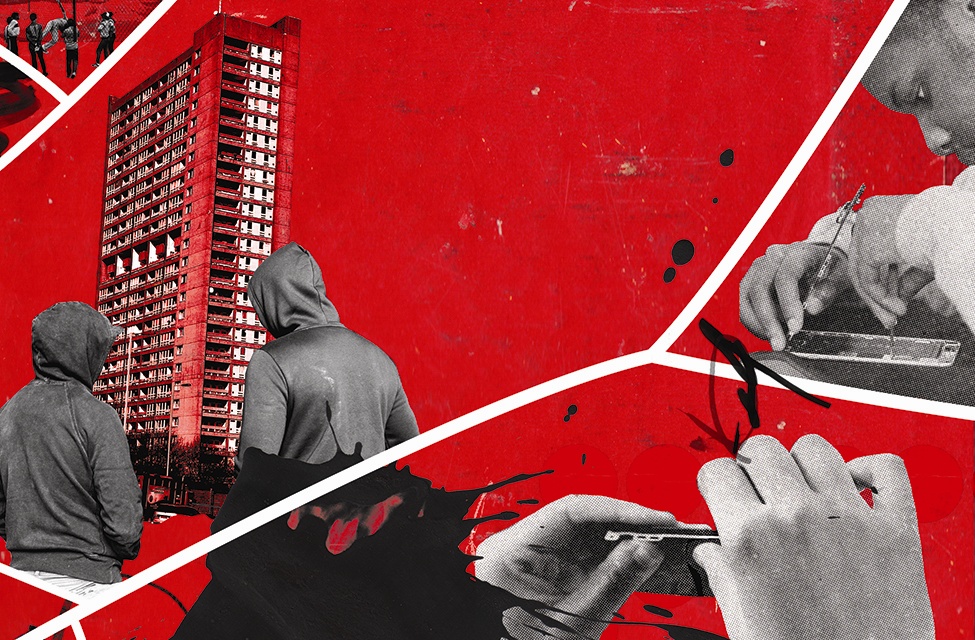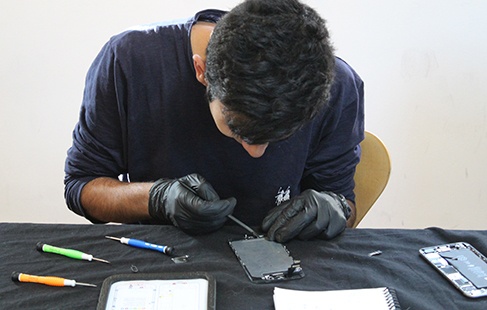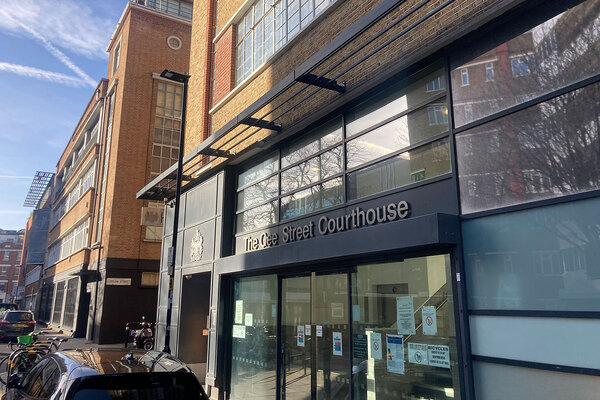You are viewing 1 of your 1 free articles
Breaking the cycle
Gang violence is a growing problem in our inner cities but councils’ youth services budgets have been cut. Can housing associations fill the void? Steve Sampson finds out
Video:
Features code

In London, violent crime among young people is on the rise. Last July, the London Mayor’s Office for Policing And Crime (MOPAC) revealed that the capital was experiencing a four-year surge in reported incidents of serious youth violence. In 2015/16 there were 6,290 victims – a 4% increase on the previous year and a 20% hike on 2012/13.
This worrying trend has come as councils’ youth services budgets have been slashed. In January, a London Assembly report found the average London council had cut youth service funding by nearly £1m, or 36%, since 2011; plans are in place to reduce 2017/18 budgets on average by another 25%.
Nationally, local government union Unison has found that councils cut £387m from youth services between 2010 and 2016, with the loss of 138,000 youth scheme places, 603 youth centres and 3,652 youth workers.
Video:
Ad slot
As is the case with other public services, housing associations are taking up some of the slack, often in tandem with local authorities and other agencies. But with so many grassroots projects – from boxing clubs to CV writing workshops and peer-led counselling – competing for attention, how do they choose which horse to back?
On Genesis Housing Association’s Grahame Park Estate in Barnet, north London, Inside Housing meets Samantha Cheadle, a social and economic regeneration officer for the 33,000-home landlord.
She is here to check in with a workshop run by Cracked It – a social enterprise that trains young people who have been involved in street crime how to fix smartphone screens.
“Youth services across the capital once played a key role in catching hard-to-reach, at-risk youngsters before they appeared on the radar of statutory services, but those services have been decimated by austerity,” she explains.
“Youth services have been decimated by austerity.”
Samantha Cheadle, a social and economic regeneration officer, Genesis Housing Association
“We as housing associations cannot fill that gap, so over the past three years we have been working on how we can target our resources to best effect to meet our commitment to our communities.
“We cannot just repeat what has gone before. Projects such as Cracked It allow us to lock on the skills we need to engage and address specific issues.”
Wielding a technician’s screwdriver and wearing rubber gloves, Julie, 20 is taking apart a smartphone as she describes how her life has changed since attending her first workshop three months ago.
“I used to spend my days chilling, but this is a buzz,” says the shy north London college student, now a trainer for Cracked It.
Julie is one of three trainers working with a dozen young people at the five-day workshop, funded by Genesis.

Primary school children taking part in the Tutors United project, supported by Genesis
For the youth workers who have guided Julie from the clutches of the capital’s gang culture, the change is palpable. Where once she was selling cannabis via social media, Julie now touts her skills as a screen technician.
“The buzz is in having a skill that is in demand,” says Julie. “The first time I posted pictures of the screen fixing on Instagram my phone just exploded, it was mad. Now I hand those skills on to others, it’s a great feeling.”
For Josh Babarinde, the 23-year-old youth-worker-turned-social-entrepreneur who founded Cracked It, Julie – one of 50 graduates of the project since launching in early 2016 – is living proof that his model works.
The challenge faced by housing associations trying to keep their younger tenants away from a life of crime is how this kind of scheme can be replicated.
Targeting the right group is crucial, says Mr Babarinde. Cracked It recruits vulnerable young people such as Julie off the street, via referrals through the Trident Gangs Unit and Safer Neighbourhood teams. The company also works with grassroots charities, former gang members and, crucially, social landlords.
Fluid landscape
Genesis, L&Q and East Thames have all funded Cracked It workshops around London, focusing particularly in areas pinpointed by the MOPAC report as experiencing a resurgence in serious youth crime and violence.
The report paints a picture of a fluid landscape with a changing criminal economy, where young people are increasingly being drawn into serious crime, such as the drug trade. Meanwhile, population mobility is creating tensions among different communities and there is said to be an increased willingness for young people to carry weapons for their own defence.
London mayor Sadiq Khan has put forward proposals for a Police and Crime Plan, seeking to combat the rise in youth violence head on.
While there is no money specifically for social landlords, funding will support agencies working alongside perpetrators and victims of crime as well as councils’ youth service provision.
“We cannot just repeat what has gone before.”
Samantha Cheadle, a social and economic regeneration officer, Genesis Housing Association
So how might housing associations fit in? Ms Cheadle at Genesis says that backing schemes such as Cracked It is part of a wider response from the sector.
One of the lessons already learned is that to genuinely engage with at-risk young people, it is important the projects have real appeal.
Keeping the offer simple is vital. At Cracked It, the basic skills – dubbed physical coding – can be mastered in days, giving “instant gratification”, according to Mr Babarinde. Within a week, a fixer can be paid between £10 and £35 an hour depending on the make of phone, the quality of the parts used and the speed of service.

And a scheme must offer tangible ongoing support. Graduates have opened Cracked It pop-up phone clinics at Spitalfields Market in the City of London. Those who continue to work can either do so at these clinics, which have a growing roster of corporate clients, or seek private clients themselves.
The company is just one of a number that have worked with social landlords to reach growing numbers of at-risk youngsters.
Genesis has also teamed up with another young social enterprise, Tutors United, which seeks to level the academic playing field by offering affordable tutoring in English and maths to school pupils.
Founder Joel Davis grew up in social housing and says the transition to secondary school is a time “when some young people face all kinds of influences and difficulties, some have learning difficulties, come from deprived homes and some start to run with gangs. We help them develop confidence and self-esteem”.
The scheme works with Metropolitan, Genesis, L&Q, Southern, A2 Dominion, Peabody, Sanctuary and Newlon. At present, it tutors 300 pupils across 14 London boroughs.
L&Q is also focusing on early intervention through a film project. Funded through the L&Q Foundation, a film called A Family’s Fortune: The Impact of Gang Life was released last month. Produced by 21-year-old Alisha Mitchell from Forest Hill in south-east London, the film is set to tour local primary schools to warn pupils of the dangers of gang crime.
The film was inspired by Alisha’s own encounter with a young boy who got involved with gangs at the age of 11 and explores the effect on his family and friends as he spiralled into crime.
“No one organisation can hope to be everything to everyone.”
Joe Williams, head of anti-social behaviour and safeguarding, Poplar Harca
Her ambitions for the film are simple: ”I hope it helps [kids of] this age with the transitioning process and shows them that they do not have to be forced into gang crime.”
The urgency of addressing the issue of youth violence has been a catalyst for greater collaboration.
Joe Williams, head of anti-social behaviour and safeguarding at east London landlord Poplar Harca, says: “No one organisation can hope to be everything to everyone – certainly not now that budgets are having to go so much further.”
On the ground, this means deploying resources alongside Tower Hamlets Council to improve anti-social behaviour response times, support neighbourhood policing, and refer families to intervention teams to spot the early warning signs in their younger residents.
And the collaboration between landlord and local authority goes deeper still. Last year, Poplar Harca took over the contract for Tower Hamlets’ youth provision services. According to Mr Williams, this cemented “the collaborative work our staff were already doing from the centres based on our estates”.
He cites the Spotlight Centre as an example of this collaboration in action. The multimillion pound facility delivers creative arts programmes for young people aged 11 to 19.
The cuckoo problem
Youth violence is not solely confined to the capital. The Home Office’s Ending Gang Violence and Exploitation paper, published in January, reveals the ripple effect for the wider South East region, and the problems it poses for social landlords.
According to the paper, London gangs have been moving into areas by exploiting vulnerable tenants, taking over premises as dealing hubs, and employing local young teenagers to take on the risky roles of transporting and selling drugs in their bid to escape detection.

The Home Office cited Basildon in Essex, Hastings and Eastbourne in East Sussex, High Wycombe in Buckinghamshire, and Medway in Kent as hotspots for what are known as ‘cuckoo’ operations.
“There is increasing evidence of London-based gangs entering the area,” says Julian Wadsworth, national partnerships manager for the South East at the Active Communities Network that works with at-risk youngsters countrywide.
“Work is being undertaken to identify gang members and develop strategies to reduce the risk of local young people being coerced,” he adds.
Active Communities offers at-risk young people a “youth-led, year-round development programme” that engages them through sport and cultural interests and supports academic, social and employment opportunities, and good citizenship. It recently teamed up with the Guinness Partnership to deliver the programme on the Leigh Estate, six miles outside Portsmouth where, Mr Wadsworth says, the problems are not so much gangs but “young people who have grown up exposed to violence, sexual exploitation and substance abuse”.
“Youth violence and crime have been an issue for many years and it is time to explore how we can align around a common goal.”
Sarah Willis, Successful Places programme manager, Hyde Plus
In the past, he says, cross-sector funders have not all been on the same page when planning projects, but that is changing: “We’re beginning to build positive partnerships that ensure a long-term strategic approach.”
Sarah Willis, Successful Places programme manager at Hyde Plus, says the sector must move towards ever-deeper alliances and clearer ambitions if problems such as youth violence are to be tackled effectively.
“Youth violence and crime have been an issue for many years and it is time to explore how we can align around a common goal,” she says, citing the cross-sector forum Vision for Young Londoners as an example of how this approach works in practice.
Bringing together funders, local authorities, youth work, play and formal education providers, arts and sports agencies, the voluntary sector and housing providers, it explores how these groups can find solutions to a range of problems.
But for some, the progress being made by the sector is still too piecemeal and uncoordinated. One senior housing professional claims the sector is “in a black hole when it comes to sharing data and offering evidence-based approaches”.
The housing worker, who did not wish to be named, has called for a national framework to be devised “that brings all our work together”, but warns that recognising the scale of the challenge is the first step: “To do that we need a shared sense of urgency and realisation that this problem is not going away.”







